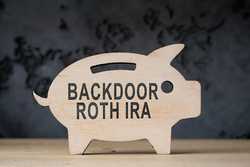Investing for Kids: How to Open a Brokerage Account for Your Child

Our evaluations and opinions are not influenced by our advertising relationships, but we may earn a commission from our partners’ links. This content is created by TIME Stamped, under TIME’s direction and produced in accordance with TIME’s editorial guidelines and overseen by TIME’s editorial staff. Learn more about it.
Adults know that one of the best ways to build wealth and to save for future goals, such as retirement or a home down payment, is to invest. This can also be true for children. There are a number of different types of brokerage accounts that can be opened for a child that can help them save for their future.
The right type of account for your child will usually be determined by your circumstances and what you are trying to accomplish. Here are some tips on opening a brokerage account for your child.
Regardless of the type of brokerage account you decide to open for your child, you will want to find a broker that offers the account you want, as well as a wide range of investments to fund it. Cost is important. Carefully scrutinize what you must spend to open and maintain the account, as well as any transaction fees associated with buying and selling investments.
Different types of brokerage firms feature various accounts. For example, JP Morgan offers full service and a wide range of brokerage accounts, while TradeStation is more narrowly focused on trading stocks and other securities.
J.P. Morgan Self Directed Investing Money | TradeStation | |
|---|---|---|
| Min. deposit | $0 | $0 |
| Fees | $0 stock & ETF trades; $0.65/contract options trades; $0 mutual funds trades | $0 stock & ETF trades; $0.60/contract options trades; $1.50/contract futures trades;$14.95 mutual fund trades |
The best type of account will depend on a number of factors. Some questions to ask include:
Once you have decided on the type of account and where you want it to reside, the next step is to open it. In most cases you should be able to do so online with ease. Occasionally there may be additional paperwork needed. You should be sure you understand all requirements up front.
You might fund a brokerage account by linking to one of your bank accounts. You could also transfer funds from another account you have at the same broker. Once you fund it, you can start making investments.
Your investment choices will vary depending on the type of account. In some cases you may work with your child to choose the investments, providing them with a learning experience.
In other situations you may be choosing the investments yourself and/or working with an advisor. Certain types of accounts, such as some 529 plans, may have more limited choices available.
There are several types of brokerage accounts that you can consider opening for your child. The best option will vary based on what you are looking to accomplish.
If your child has earned income from a job, you can open a minor Roth IRA account for them. For income earned in 2023 contributions are limited to $6,500; for 2024 the limit is $7,000. Contributions can be made up until your tax filing deadline for the year (usually April 15).
Roth IRA withdrawal rules are important to know. Contributions can always be withdrawn tax free; however, earnings on investments in the account are subject to both taxes and a penalty until your child reaches age 59½.
You can tap into the amounts contributed if the money is needed for college, leaving any earnings and future contributions to grow tax free. There is also an exception to the penalties on earnings if the money is withdrawn for a first-time home purchase. To qualify for the exemption, the withdrawal cannot exceed $10,000, and the account must have been open for at least five years.
Looking for financial advice regarding your retirement accounts? Consult with Empower's team of expertsA 529 plan is designed as an investment account to save for college. There are two types: prepaid tuition plans and educational savings accounts. In the latter case the money can be invested in mutual funds, exchange-traded funds (ETFs), and other types of investments.
Contributions to a 529 account can be made by anyone, though often it’s a relative of the child. Money grows tax free until withdrawn tax free for eligible college expenses. The Tax Cuts and Jobs Act of 2017 expanded the use of 529 plans to cover expenses for kindergarten through grade 12 in some cases.
Money left over in a 529 plan can be used to pay off student loans for the beneficiary or their siblings. Additionally, the money can be used by other family members to cover educational costs. The Secure 2.0 Act of 2022 added the option to be able to transfer up to $35,000 to a Roth IRA in the name of the beneficiary. This is a lifetime limit.
The Backer platform offers a number of 529 account options.
A Coverdell education savings account is also designed to help your child save for college, but unlike a 529 account, it has a strict contribution limit: $2,000 per year total per beneficiary, even across multiple accounts. The limit is reduced for higher-income families.
A custodial account is an investment account that a parent, grandparent, or other adult can establish for a minor child. Typically, these accounts are created under the Uniform Gift to Minors Act (UGMA) or the Uniform Transfer to Minors Act (UTMA). The custodian controls how the money is invested and all other aspects of the account until the child reaches the age of majority. At that point, control of the account and its assets is given to the child. This is irrevocable, and there are no restrictions as to what can be done with the money. For example, the funds do not have to be used for education.
Many major brokers provide custodial accounts, including JP Morgan and SoFi Invest. Robinhood offers several investing options for them, including cryptocurrency.
Some brokers offer a brokerage account specifically designed for teens. Fidelity was one of the first to do this.
With this type of brokerage account, your child takes the lead on investing. You will probably want to guide them, at least at the start, but running the account can be a good learning experience. However, this can include losing money, so be prepared.
A key consideration in deciding what type of account to open for your child is what you are hoping to accomplish. For example, if the main goal is to save for your child’s college education, a 529 account might be the best option. If your goal is to allow the child to make their own investment decisions, a brokerage account in their name might be what’s called for.
Overall, you should consider the reason for opening the account, the objective for the money, and how it may affect your taxes. For example, under certain circumstances a custodial account can trigger unwanted tax consequences, a phenomenon known as the “kiddie tax.” For tax year 2024 there is a break for the first $1,300 in income generated by the account. The next $1,300 in income is taxed at the child’s tax rate. Any income over $2,600 is taxed at the parent’s tax rate.
One of the advantages of opening brokerage accounts for your children is the opportunity for them to learn about investing at a relatively early age. These are lessons they can build on and use throughout their adult lives as they earn money and invest for their life goals.
One idea might be to talk to your kids about the types of products that interest them. To the extent they are offered by public companies, you and your child can invest in some of these stocks. This might be in addition to a more diversified portfolio of mutual funds and ETFs. You can then teach your child how to track these stocks, and you can jointly make decisions regarding them over time.
Opening a custodial account or other type of brokerage account for a child allows them to save for the future. Using one to pay for college is a logical choice, but the purpose can simply be to get your child off to a good financial start in life. A custodial account can teach your child the basics of investing, something that will be a lifelong benefit.
| Type of account | Pros | Cons |
|---|---|---|
Brokerage account for kids | Can provide your child with experience in investing their money that can be carried over to adulthood | Possible large losses |
Custodial account | Parents control funds | Unexpected tax liabilities; can count against financial aid for college; money reverts to the control of the child at the age of majority |
529 account | Tax-free growth and withdrawals for qualified expenses; unused funds can pay off student loans, be transferred to other family members, or fund a Roth IRA for the beneficiary | Restrictions on what the money can be used for; limited investment choices |
Roth IRA | Tax-free growth and withdrawals | Funds largely unavailable until retirement; child must have earned income to contribute |
The best account for your child will depend on your financial situation, what you want to accomplish, and other factors. Top choices can include:
Depending upon the type of account and other issues, consider using platforms such as Acorns.
Besides a custodial account, another option to help children save for the future is a savings account. A number of banks and credit unions offer special accounts for kids and teens.
Investing for your kids can have a lot of benefits. There are a number of account types that can be tailored to your situation and savings objectives.
A brokerage account can be an excellent way for your kids to learn about investing. This can be accomplished by working with your child to invest the money in their account or allowing your child to invest on their own (generally not permitted until your child is 18).
Educational savings accounts, such as a 529 or a Coverdell are good ways to help save for college costs. A custodial account is another way to save for education with more flexibility but fewer tax benefits.
A Roth IRA can help your child get an early start on retirement savings.
Be sure to consider the various investment avenues for your kids as part of your overall family financial planning.
Opening an investment account for a minor is similar to opening one for yourself. The steps include:
A custodial account is an account created for the benefit of a minor. It is generally started t by a parent or grandparent who then controls it. Money is invested on behalf of the minor beneficiary. Note that once the beneficiary is no longer a minor, the money in the account reverts to their control. If you feel that your child will not be ready to handle this type of responsibility, then a custodial account is not the way to go
Gifts to the account are subject to the annual gift tax exclusion in effect at the time, which is $18,000 per person for 2024. The two main types of custodial accounts are UGMA (Uniform Gift to Minors Act) and UTMA (Uniform Transfer to Minors Act). Income generated by the account can be subject to the kiddie tax.
Be aware that the income in these accounts can have an impact on a child’s Free Application for Federal Student Aid (FAFSA), which is used to get financial aid financial aid application for college.
The documentation required to open a custodial account that you run is usually fairly minimal. You will need the full name, date of birth, and Social Security number for both you and the child. You will also probably need a picture ID, such as a driver’s license or passport, a phone number, and an email address.
The information presented here is created by TIME Stamped and overseen by TIME editorial staff. To learn more, see our About Us page.




